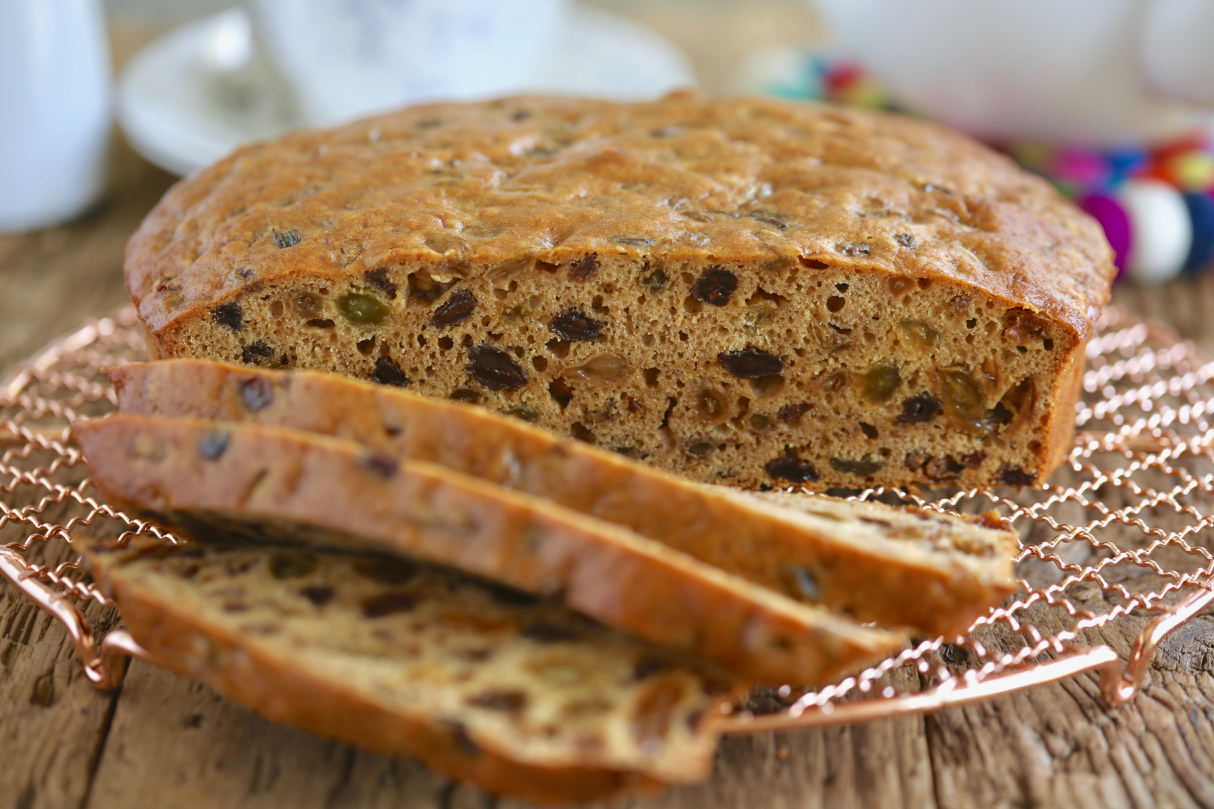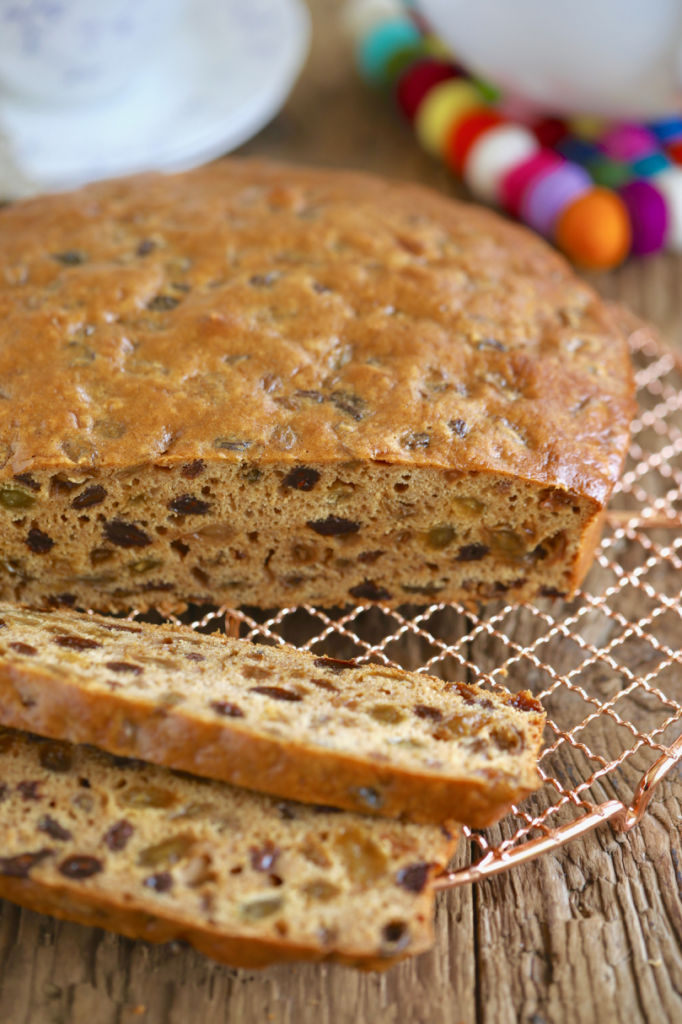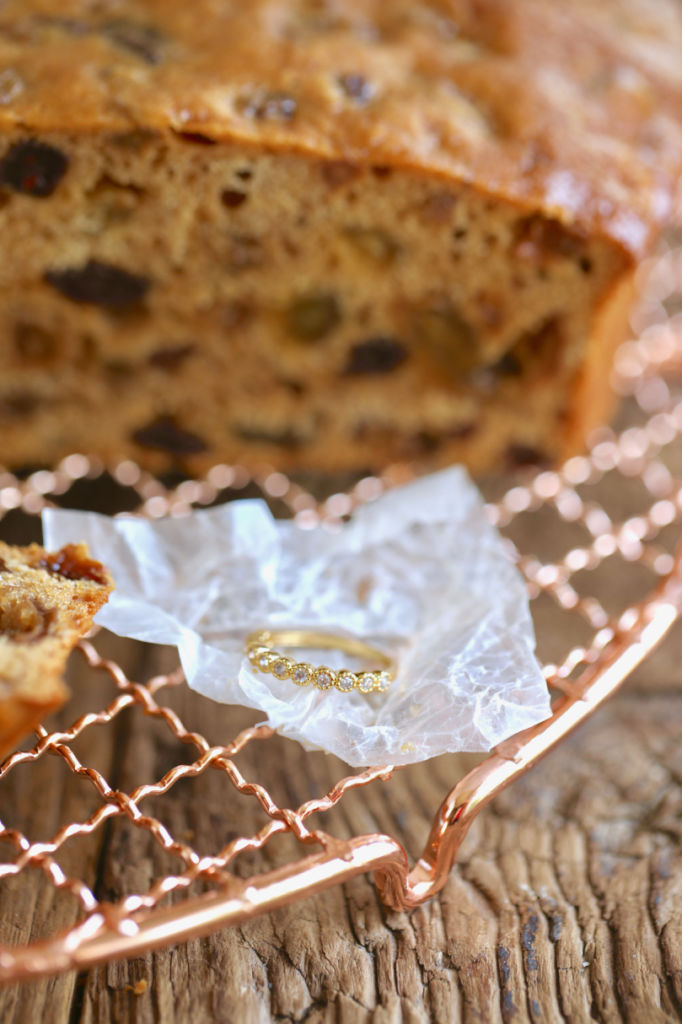Hi Bold Bakers! This is Patricia, Gemma’s mum. With Halloween just around the corner, I wanted to share you with a traditional recipe for Irish Barmbrack (as gaeilge Bairin Breac), a cake that in Ireland we eat around Halloween. It is a cake rich in stories and traditions that I think you will find really interesting. Also, it’s just a delicious cake to have in the fall months with butter and a cup of tea. Already have an account?
A Brief History of Halloween
The origin of Halloween dates back to the ancient Celtic festival of Samhain (Pronounced Sow-in) about 2.000 years ago. Samhain was celebrated by the ancient Celts in the belief that the souls of their ancestors returned to earth on this night causing general mischief and damaging crops. The druids, who were the Celtic priests, channeled these spirits to determine the future — fortune-telling if you will. Bonfires were built and animals were sacrificed to placate the spirits and to ensure safe passage through the winter period. To a point, it was both a celebration of the harvest and the casting of spells to ward off evil for the cold months ahead. Ancient Celtic people in Ireland, the United Kingdom and northern France, celebrated their new year on November 1st. It is regarded as All Saints Day (All Hallows) in the Catholic tradition, followed on the 2nd of November by All Souls day. The last day of October then was All Hallows Eve, which is what we now know as Halloween. The tradition has spread throughout the world at this point in time, the original meaning lost, but the ghost of the original idea remains in how we celebrate Halloween today.
A Brief History of Barmbrack (As Gaeilge Bairín Breac)
Halloween today continues the ancient Celtic tradition to an extent. In olden times at Halloween, which coincided with the harvest, the fruit would be gathered to make the Christmas Cakes as this was a way to preserve the fruits which were a great luxury. The eggs which were free-range and seasonal would be scarcer as the winter months rolled on, and the butter too would be getting scarce. The Barmbrack in a sense was a taster, a treat at this time of year with the promise of Christmas. Not as rich as a Christmas cake, and more like a bread, with a scattering of dried fruit and spice when available, it was generally spread with butter to be eaten. The Irish term for this, Bairín Breac, means ‘speckled bread’ indicating that the fruit was scarce in the loaf. The Druidic tradition is represented by the inclusion of charms in the bread, meant to indicate the fortune of the recipient. There were a few traditional charms: a ring, a coin, a pea, and a piece of fabric.
A pea, a dried pea, the person would not marry A piece of cloth, the person would have bad luck or would be poor A coin, would enjoy good fortune or be rich A ring, the person would be married within the year
The person who got the ring was meant to place it under his or her pillow when they would dream of the person they would marry! The ring is still included in a barmbrack today, though I think it is now regarded as just a little bit of fun.






